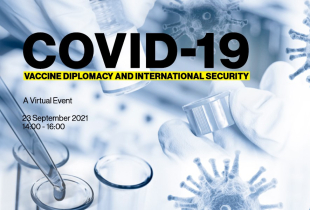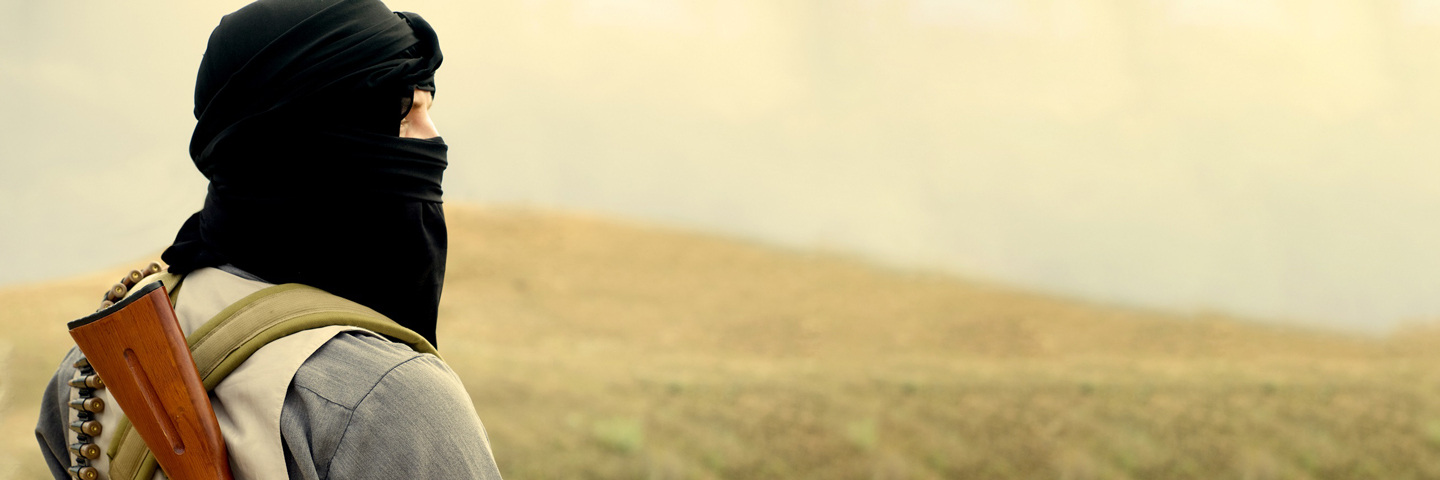
The COVID-19 Pandemic: A Preliminary Assessment of the Impact on Terrorism in Western States
Executive Summary
- The paper analyzes the terrorism threat against western states during the novel coronavirus disease (COVID-19) pandemic and, in particular, whether the crisis has created particular vulnerabilities that terrorists could exploit both to mount attacks and attract new recruits. The paper also explores the extent to which the pandemic might make western societies more vulnerable to terrorism in the longer term.
- Salafi-jihadist and far-right extremists have greeted the COVID-19 crisis with enthusiasm, viewing its impact on the West as both vindicating and advancing their ideologies and objectives. However, despite the calls for attacks on social media, the pandemic’s lockdowns, increased surveillance, travel restrictions, and the heavy police and military presence on the ground have created a challenging environment for terrorist operations.
- The security services have been drawn directly into the campaign against the corona virus. This has diverted resources and assets away from counterterrorism duties in the short term, which might create potential opportunities for terrorists. As a result of the pandemic, governments will need to review national security priorities in the longer term. This is likely to result in a much greater emphasis on domestic and international public health issues. Counterterrorism may not retain its post 9/11 position in the hierarchy of western national security priorities.
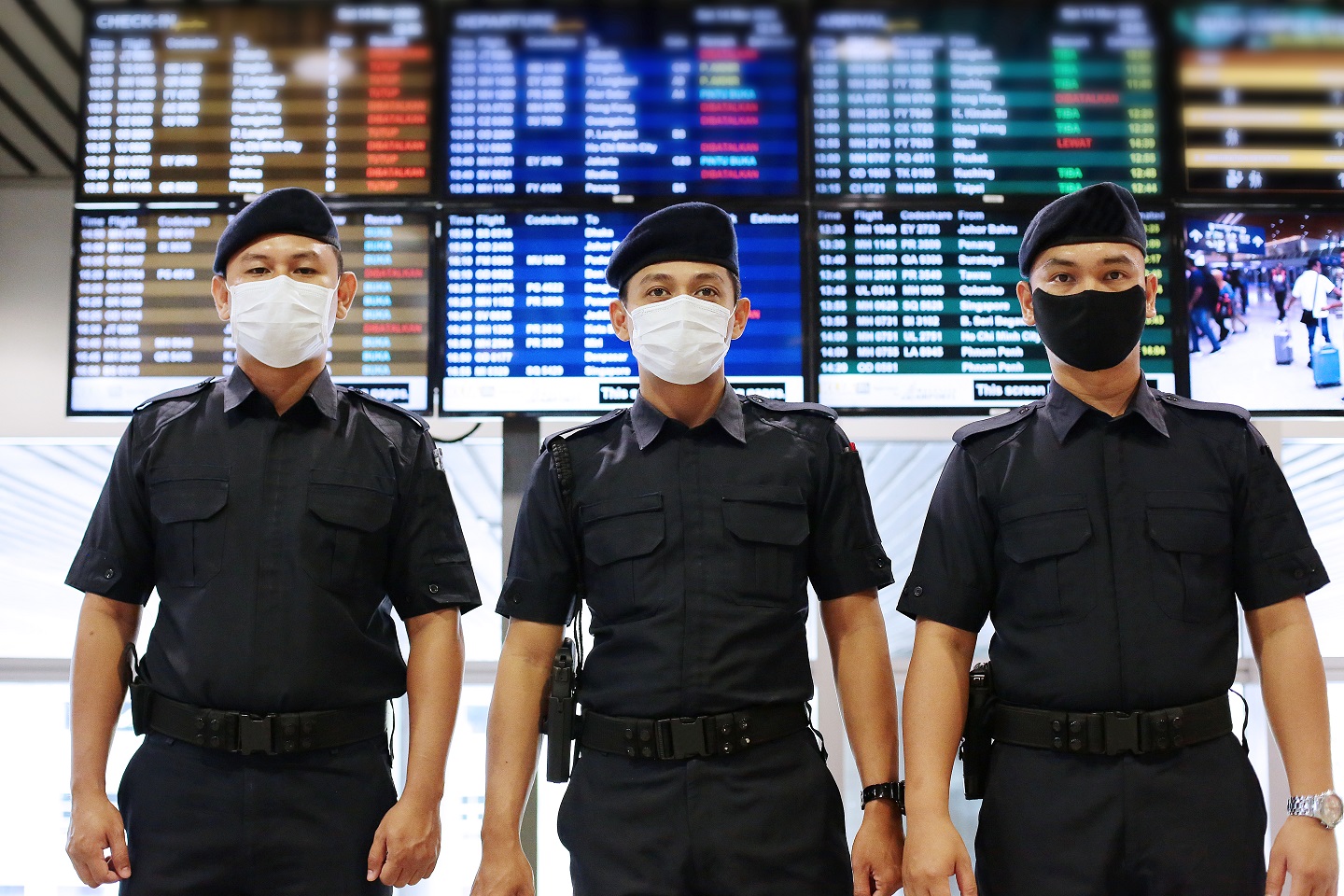
Introduction
It is already a truism to state that the novel coronavirus disease (COVID-19) pandemic will have an incalculable economic, social, and political global impact. World-wide trade has shrunk dramatically as borders have closed, stock markets have plummeted, numerous businesses have ceased trading, and unemployment has soared to unprecedented levels. Governments have been overwhelmed by the speed and scale of the crisis. Many have introduced sweeping emergency powers drastically restricting societal and personal freedoms. An ugly form of “coronavirus nationalism” has emerged, although such a reaction is ill-suited to address a global problem that requires an international cooperative response. Lockdowns have affected more than half the world’s population; it is hard to gauge the physical and psychological impact on people after months of social isolation. Public health officials suggest that the crisis might continue for many months, with public health and economic aftershocks that could last for years. The UN Secretary General has described the pandemic as the worst global emergency since World War II.
People all over the world are shocked and disturbed by the crisis, but conversely, although terrorists are no more immune than anyone else to the COVID-19 disease, many terrorist groups have reacted to the pandemic with enthusiasm. Both Salafi-jihadists and far-right extremists claim that the pandemic vindicates their very different ideological stances. Islamic State (IS) sources have described the virus as God’s will, a revenge for crimes against Muslims, and celebrated its spread in China, India, and across the West. Far-right extremists have also responded with interest, viewing the pandemic as an opportunity to accelerate their agenda and even exploit the virus as a biological weapon. It remains to be seen to what extent terrorists, both groups and lone actors, will actually capitalize on the current crisis, although historically terrorist groups of all persuasions have tended to be quick to target perceived political and societal vulnerabilities. Both the U.S. Department of Homeland Security and the NATO Secretary General, Jens Stoltenberg, have already warned that terrorists will seek to take advantage of the pandemic.
This paper analyzes the terrorism threat against western states during the pandemic.1 It addresses the question of whether the current situation offers greater opportunities for terrorists, not just to mount attacks, but also to spread their ideology to radicalize and motivate potential supporters.The paper also examines the particular vulnerabilities created by COVID-19 that terrorists might seek to exploit. Of particular importance is the degree to which the security services’ ability to prevent and respond to terrorism will be affected by their commitment to public health and public order tasks during the pandemic. Finally, the study will explore the extent to which government measures during the crisis and their impact on a traumatized public could make societies in the West more vulnerable to terrorism in the longer term.
The Terrorist Threat during the COVID-19 Pandemic
Salafi-Jihadists
IS has described the pandemic as “the crusaders’ worst nightmare.”2 Initially IS warned fighters not to travel to areas affected by COVID-19, but subsequently, in numerous statements, the group has urged its supporters to exploit opportunities presented by overstretched security forces and social disorder caused by the pandemic in western states. IS has encouraged lone actors to mount attacks to increase the level of fear already present in affected states, referring to previous successful operations in Paris, London, and Brussels, stressing that no mercy should be granted to enemies who had previously shown no restraint when bombing Muslim civilians.3 IS supporters have welcomed the pandemic as a punishment from God and called for attacks in western countries, India, and China, whilst they remain especially vulnerable.
Terrorist groups are well aware that millions of people are largely confined to their homes and consequently spending more time on the internet and social media. It has been common practice for jihadist groups to claim that any natural disaster in enemy states is God’s will and provides an opportunity to mount attacks. Consequently, both al Qaeda and IS have stepped up their propaganda, including apocalyptic YouTube videos that variously blame Jews and America for COVID-19.4 But while both groups claim that the virus manifests God’s anger against the West, their messaging has been noticeably different. Al Qaeda’s propaganda wing As-Sahab has highlighted the damage inflicted on the U.S. economy, a long-term campaign objective promoted by its leader Ayman al Zawahiri, but has also urged westerners to use the time to study Islam and convert.5 Along with some other Islamist groups, al Qaeda has actually promoted ways to restrict the spread of the disease. IS media groups, such as Ribat and Murhafat have been more forceful and uncompromising, calling for attacks to enhance what the group describes as God’s campaign of vengeance against the West. However, it is uncertain whether either group’s approach will attract new converts or active terrorist recruits. Many extremist religious leaders seem to believe that Muslims cannot be infected by the virus and have advised believers to ignore public health warnings,6 thus exposing potential terrorists to unnecessary risks.
Far Right
According to the Global Terrorism Index, far-right terrorist incidents in the West have increased by 320% in the past five years.7 Like IS, far-right groups have signaled their intent to exploit the effects of the COVID-19 outbreak. Already, at the end of March, the FBI shot dead a self- proclaimed neo-Nazi in Missouri who was plotting to car bomb a hospital treating COVID-19 victims. Some extremists believe that the pandemic will accelerate social and political change that will favor the authoritarian right.8 Supporters have been active online in promoting conspiracy theories, disinformation, and violence against minorities, critical infrastructure, and even Federal Emergency Management Agency (FEMA) agents.9 Ostensibly banned groups such as the Atomwaffen Division and the Nordic Resistance Movement, along with individual neo- Nazis and white supremacists, have called for attacks against the police and, inevitably, the Jewish community.10 Right-wing chat groups have gone further than Salafi-jihadist groups in identifying specific targets and attack methods. Techniques discussed include the use of spray bottles filled with bodily fluids from infected persons or the spread of the virus by coughing or touching any surface handled by people in shops and on public transport.
Far-right extremists have been particularly active on social media led by “accelerationists,” who believe that acts of violence can speed up the inevitable collapse of what they regard as a globally-connected, degenerate society. The far right has offered their ideology as a solution to an audience made captive by the virus and perceived to be increasingly susceptible to fake news, conspiracy theories, and extremist material. Terrorist analyst Rita Katz has described the far right as “weaponizing information” to create greater panic by disseminating disinformation such as claims that urban areas are subject to martial law and that competition for scarce essential supplies has caused a widespread outbreak of inter-personal violence.11 Violent imagery has included attacks against Asians posted on extremist-friendly platforms such as Telegram, 8chan, and Gab.12 Posts on Telegram, the messaging site of choice for the far right, have asserted that white nationalists have an obligation to spread coronavirus.13
Mainstream social media companies have recently become adept at removing obviously terrorist- related material from their sites and are currently working together to combat pandemic disinformation,14 but extremists have exploited the gray area of public health disinformation, which is not covered by social media restrictions.15 The British Nationalist Socialist Movement, among other groups, has used Facebook to post material variously blaming the pandemic on homosexuals, Jews, and other minority groups. There have been unconfirmed reports that Russian activists are behind some of the extremist materials posted on social media. If so, it reflects long-term Russian government support for anti-democratic elements in the West. In an unprecedented development, the U.S. Government recently designated the ultranationalist Russian Imperial Movement as a terrorist group.16
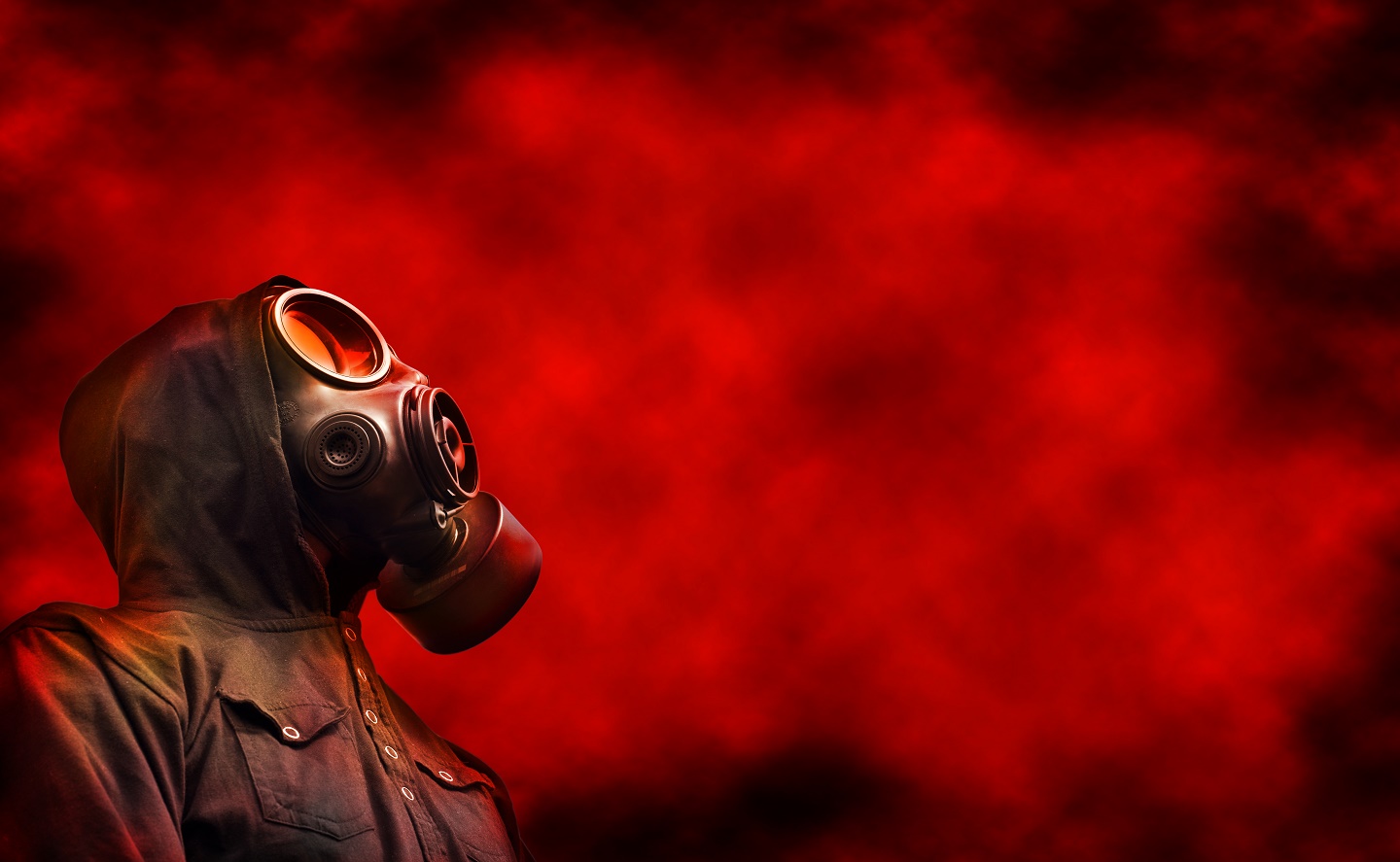
Bio Terror
The pandemic has raised the specter of bio-terrorism, using COVID-19 as a biological weapon (BW). In a speech to the Security Council, Secretary General Antonia Guterres singled out the corona virus bio-terrorism threat, warning that “Non-state groups could gain access to virulent strains that could pose similar devastation to societies around the globe.”17 Many terrorist groups have aspired to use BWs, but historically these have proved very difficult for terrorists to weaponize.18 BW dispersal is difficult and unpredictable. The heat from an improvised explosive device designed to disperse the agent would kill most of the organisms, while wind or rain can significantly degrade their effects. The wealthy Japanese cult group Aum Shinrikyo spent a small fortune trying to create a BW in the 1990s, but failed.
During the Ebola crisis in Africa in 2014, there were reports that IS had tried to use Ebola- infected individuals as delivery systems for the virus, but there is no hard evidence that this was actually attempted. However, right-wing extremists see potential to use the corona virus in a similar manner.19 Infected individuals have been encouraged to visit mosques and synagogues, ride on public transport, and even contaminate dollar bills. These attack scenarios may seem fanciful, but have raised the possibility that lone actors may try to practice crude bio-terrorism, especially if the coronavirus threat persists. Writing in The Economist in April, Robert Morley, a former member of the U.S. National Security Council, belatedly suggested that the money spent on America’s latest aircraft carrier would have been better used preparing for future bio-warfare threats.20
Other Terrorist and Insurgent Groups
In comparison with Salafi-jihadists and right-wing terrorists, there has been a muted reaction from left-wing extremists during the pandemic so far. The German left-wing radical website Indymedia has called for insurrection, looting, and attacks against energy supplies, but overall there appears to have been negligible violent left-wing reaction21 Some left-wing analysts claim that the pandemic demonstrates the ultimate failure of globalized market capitalism and call for its replacement by more egalitarian, environmentally-friendly, socialist systems in the aftermath of the crisis. However, it is too early to tell whether there will be sufficient public anger to trigger a violent attempt to push a left-wing political agenda following the pandemic.
In contrast to the activity discussed above, long-established insurgency groups like the National Liberation Army in Colombia and the New People’s Army in the Philippines have proposed pandemic ceasefires. Taliban and Hezbollah insurgents have also responded to the pandemic in a measured and responsible fashion. The Taliban, for example, has offered safe passage to healthcare organizations and humanitarian workers fighting the virus in Afghanistan.22 However, these “mature” terrorist groups are not the ones calling for attacks against civilians in Western states.
Finally, it is worth highlighting that some cranks and misanthropes have been charged with “making terroristic threats” in the U.S. and elsewhere. Individuals with no known affiliation to a terrorist group or ideology have been arrested for deliberately coughing on people or food and other actions intended to spread the virus.23 It is quite possible that the threat from such misfits is comparable to those from genuine lone actor terrorists. In late March, U.S. Deputy Attorney General Jeffrey Rosen sent a memo to attorneys and federal law enforcement agencies stating that those who deliberately exposed people to or infected others with the virus could be charged under federal terrorism-related statutes, although both the courts and the public may view such prosecutions as an improper use of terrorism legislation.24
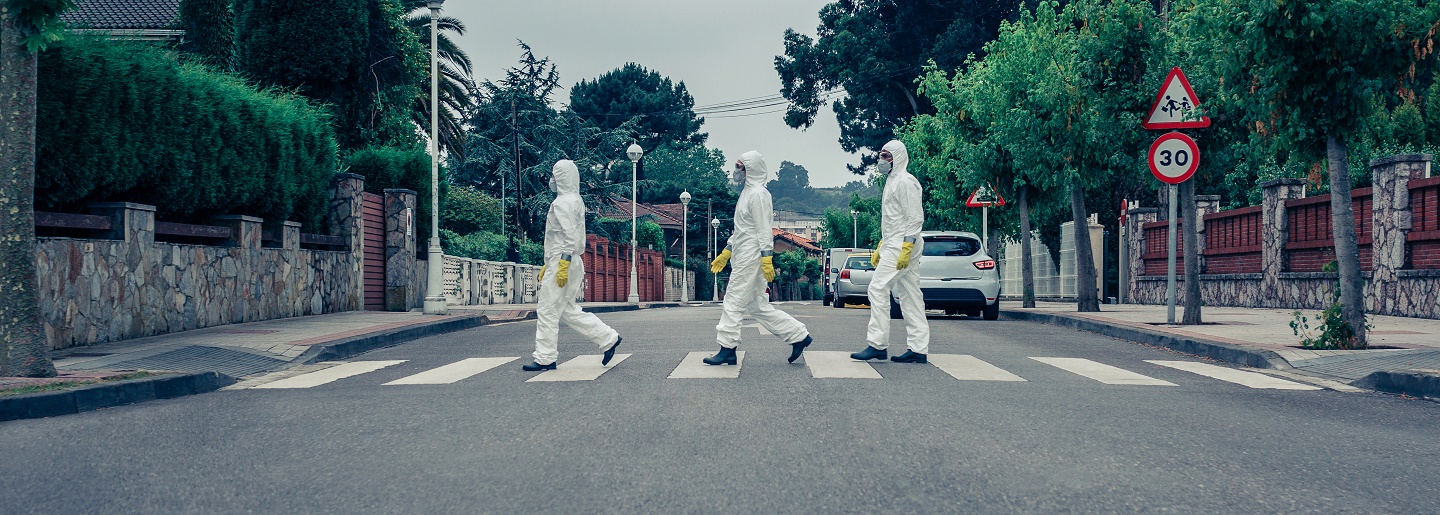
How Likely Are Terrorist Attacks During the Pandemic?
Western states will remain a relatively hard target during the pandemic. The last successful, directed attacks by IS in the West took place in Brussels in 2016. It seems unlikely that the group will attempt to mount similar attacks during the pandemic for the reasons outlined below. There have, of course, been sporadic attacks by IS-inspired terrorists since 2016, but attacks by what Marc Sageman referred to as “groups of guys”25 will be more difficult for jihadists as long as emergency measures remain in place. Attacks by jihadist lone actors are, of course, unpredictable and difficult to prevent. They are likely to occur, although movement and targeting during the pandemic may be more difficult even for terrorists operating alone. Governments have implemented population lockdowns and severe restrictions on travel and gatherings. There is also an increased police and military presence on the ground in many cities. IS recognizes that the prisons in Syria and Iraq, where thousands of their fighters and families are being held in crowded and unsanitary conditions, are more realistic and accessible targets for their operations. Freeing fighters while the authorities holding them are distracted or actually infected by the virus might increase IS’s operational capabilities and represent a major propaganda coup.26 Such action would not be unprecedented; successful operations to free supporters from prisons were a feature of IS battlespace preparations before its seizure of territory in Iraq in 2014.
Arguably, right-wing extremists pose a greater terrorist threat to western states during the pandemic than lone actors inspired by IS. However, many of the constraints noted above would also apply to terrorists of any ideological persuasion or motivation. The FBI and law enforcement agencies in Europe have recently put a much greater priority on countering white supremacist groups; arrests have weakened their operational strength. Some far-right organizations have been directly affected by the virus and several networking events have had to be canceled or postponed to keep members safe. According to the U.S. Southern Poverty Law Center, many right-wing extremists are content to shelter in place at the moment rather than risk exposure to the virus, not least because they believe that COVID-19 alone is creating the societal breakdown they seek to exploit.27
How Does COVID-19 Affect the Security Forces’ Ability to Prevent and Respond to Terrorist Attacks?
The Impact of COVID-19 on the Armed Forces
In recent years, the security services in the West have proved increasingly able to prevent major terrorist attacks or disrupt plots during the preparation stage. Therefore, a critical issue is whether the environment for homegrown terrorist attacks will become more permissive due to the pandemic. While the discussion above asserts that the risk of home-grown terrorist attacks is likely to diminish during the pandemic, there will be vulnerabilities during and after COVID-19 that might facilitate terrorism. Much depends on the continued readiness of the security forces. As governments focus their efforts and resources on combating the virus, normal security protocols may be reduced or abandoned. These include counterterrorism (CT) measures.
Members of the armed forces, including reservists, have been drawn directly into the struggle against the virus. The armed forces have readily-available, disciplined manpower and large-scale logistical assets to provide medical supplies, transportation, and communications to support the civilian emergency services. Soldiers are providing reinforcement to the police to enforce lockdowns and man check points, as well as helping to build and run emergency hospitals. Normal training, troop movements, and exercises have been postponed or cancelled, including major international maneuvers. This not only has an impact on domestic military preparedness, but also limits the international cooperation and interoperability on which effective operations against international terrorism depend. Soldiers not engaged in operations have also been subjected to restrictions, such as social-distancing, or have been confined to barracks. Many support and headquarters staff are teleworking. Military personnel are normally young and fit, but the exigencies of military service do not readily lend themselves to social-distancing. In the U.S. alone, military corona virus cases are already higher than the national average.28 Officials in Europe have not released figures for military coronavirus cases, but the impact appears to be significant.29 There are also concerns that infected military personnel may be spreading the virus as they assist the civilian emergency services.
The pandemic will inevitably have a significant impact on military readiness in the short term. The armed forces do not normally take the lead in CT operations in Western states, but in some countries they provide specialized skills, such as firearms training and bomb disposal expertise. They also often supply direct support to law enforcement after major attacks. More than 10,000 troops were deployed in France after the terrorist attacks in Paris in 2015; the UK also sent troops to support the police after IS-inspired attacks in 2017. Military action is also required to eliminate prospective “safe havens” abroad, such as that in northern Mali in 2013, where terrorists can plan, direct, or inspire attacks against Western states unhindered. Although IS has lost the territory of its self-proclaimed caliphate, the group remains active and lethal, both in the Middle East and through its affiliates elsewhere. There are also growing signs of unprecedented cooperation between al Qaeda and IS in the Sahel; some commentators are understandably skeptical about the Taliban’s assurances during current peace negotiations that al Qaeda will not be allowed to use Afghanistan again as a base for operations.30
Nevertheless, citing the danger of coronavirus contagion and the related suspension of CT training for the Iraqi armed forces, the UK, France, Canada, and Spain have withdrawn troops from the anti-IS coalition.31 The U.S. has also reduced its troop presence and has contemplated complete withdrawal from Iraq. It is not yet possible to measure the impact of COVID-19 on military CT operations, but it would be naïve to assume that it will remain business as usual. In the longer term, the armed forces may also be faced with significant budget cuts as scarcer, post- pandemic financial resources are re-directed to public health and domestic social support programs.
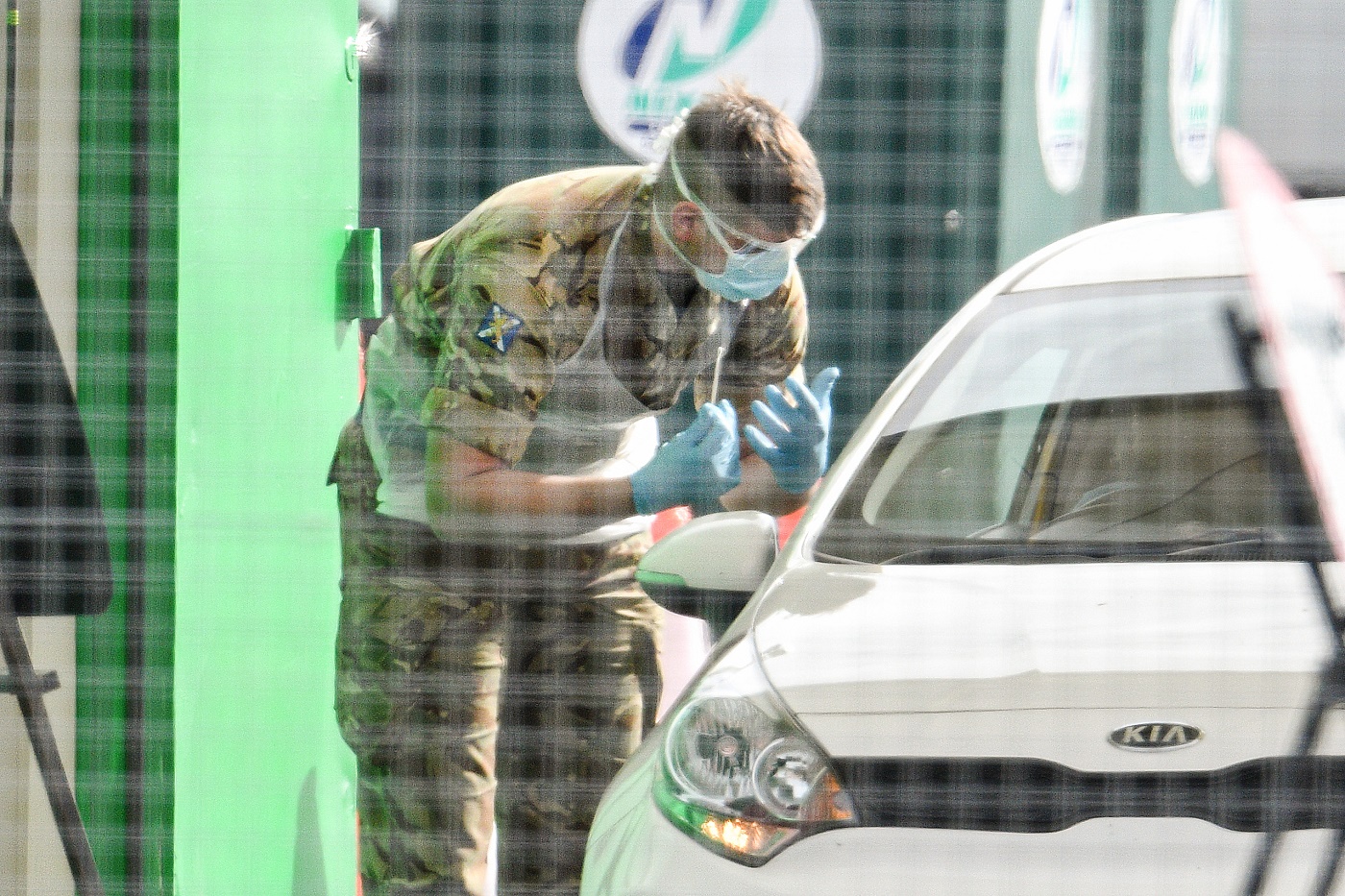
GLASGOW, SCOTLAND - APRIL 08: Military personnel test essential workers at drive-thru coronavirus testing centre at Glasgow Airport’s long-stay car park on April 8, 2020 in Glasgow, Scotland. There have been around 55,000 reported cases of the COVID-19 coronavirus in the United Kingdom and over 6,000 deaths. The country is in its third week of lockdown measures aimed at slowing the spread of the virus.
The Impact of COVID-19 on Law Enforcement and Intelligence Services
Police services have the leading role in combating home-grown terrorism, but this is clearly not their current priority. In addition to normal policing duties, the police have had to deal with significant extra challenges as a result of the corona virus. Western governments have rushed through emergency legislation to allow the police to enforce lockdowns and social isolation. These measures have been draconian.32 In Italy and France, for example, people must carry a written declaration ready to show to the police on demand giving their reasons for leaving home. Spain has banned all outdoor exercise except for dog-walking. Tens of thousands of extra police and gendarmes have been deployed to enforce these lockdowns. Increasingly tightened restrictions have already started to cause some localized unrest in Italy, especially in poorer parts of the South as people run out of food and money.33 Even in the UK, with its tradition of lighter- touch policing, the lockdown measures have generated complaints about heavy-handed police enforcement.34
Not only has the epidemic diverted the police from CT duties, it could also sour relations between law enforcement officials and the public, particularly with racial minorities and the poor. This would negatively affect the willingness of members of the public to share information with community police officers about radicalized individuals or potential terrorist planning activities in their communities. A relationship of trust between local people and community police officers has proved an enduring, valuable source of CT human intelligence.35
Intelligence-led policing has become a critical factor in domestic CT in the last two decades. Since 9/11, police services have had to adapt to the changing character of terrorism. Against informal, networked terrorist cells and lone actors that aim to carry out indiscriminate mass- casualty attacks against civilians, the law enforcement emphasis has shifted to an intelligence-led approach that seeks to identify and disrupt plots and arrest suspects at the earliest opportunity.36 This approach requires police forces to work closely with domestic intelligence services and usually involves additional legal authorities and interagency cooperation to conduct surveillance, seize property, and intercept personal communications. Understandably, governments have not been forthcoming about the impact of COVID-19 on their intelligence services. Although as far as the U.S. is concerned, the CIA and NSA claim that they are still able to perform their missions effectively, there are fears about the disease’s impact on the thousands of intelligence contractors whose work is vital to maintain operational capabilities.37 In the longer term, it seems likely that, barring a major terrorist outrage in a western state, the intelligence focus on terrorism will diminish as domestic and global public health issues assume a more central role in national security.
Thousands of police in the U.S. alone have been put on sick leave or tested positive for the virus. Reports in early April suggested that 20% of the New York Police Department (NYPD) were infected. A similar percentage of Detroit’s police force was also quarantined. Comparable problems appear to be affecting police forces in European states with high rates of infection.38 If infection rates continue to be high, the armed forces may have to shift from a supporting role to directly undertaking duties normally handled by the police.39 As historical experience during stability operations and counterinsurgency campaigns has illustrated, soldiers who have not been trained in policing can rapidly escalate tensions and violence when called upon to deter crime, defuse potentially violent incidents, or arrest suspects. Increased involvement by the armed forces in a domestic policing role could therefore present security and public order challenges. However, unlike the situation in war-torn states, enough law enforcement leadership should still be in place to ensure that police operational primacy is retained.
To What Extent Might the Pandemic Make Societies More Vulnerable to Terrorism in the Longer Term?
In 2008, a team of historians and medical ethicists assembled by the American Civil Liberties Union criticized the tendency to treat public health problems using approaches more appropriate to dealing with criminals.40 It is too early to claim that this is valid criticism of the response to the unprecedented crisis that COVID–19 presents. However, democratic governments have greatly increased their repressive powers to mount surveillance, prevent freedom of assembly, and detain people indefinitely. In the UK, for example, the recent coronavirus bill gives police and immigration officials the authority to arrest and detain people suspected of being infected with the virus “for screening and assessment.”41 Different regional police forces in the country have also interpreted their new powers arbitrarily. In Austria, Italy, and Belgium, emergency powers have given security agencies unprecedented authority to use data from major telecommunications companies to track people’s movements.42
As noted above, there have been reports in Europe of social unrest as a result of COVID-19 restrictions and complaints about police tactics in enforcing them. Domestic violent extremists in the U.S. have already called for the use of force to combat what they view as government overreach and the possible imposition of martial law.43 Gun sales in the U.S. spiked to two million during March 2020 alone. There are fears that temporary powers granted to governments and security forces during the current crisis may become permanent and be used for purposes unrelated to public health and safety. These emergency powers are antithetical to liberal democracies in peacetime, but from a narrow CT perspective would make the task of identifying and tracking potential terrorists much easier.
Government repression is widely recognized by scholars and analysts as a trigger for acts of terrorism as it can turn already aggrieved citizens into violent insurgents.44 However, government repression in these situations almost always involves serious human rights abuses and violence. It usually represents the last straw for a minority group with concrete grievances fueled by real or perceived injustice and discrimination. The COVID–19 pandemic has highlighted governments’ lack of preparedness, social inequalities, and macro-economic failings. It has also created widespread fear and alarm, but it is premature to conclude that the crisis will inspire new forms of anti-state terrorism or turn largely non-violent anti-globalization and environmentalist groups into insurgents. At the height of the crisis, there is very little evidence that people in western states are contemplating violence in response to the unprecedented loss of their freedoms. At the end of the emergency, the vast majority of people are likely to focus on their immediate financial and employment challenges, as well as reconnecting physically with family and friends. Widespread violent resistance against government “repression” appears unlikely. Much may depend on when, and if, emergency powers are rolled back as the COVID- 19 threat diminishes. Other factors include the extent of continued government economic and social support to those most affected and, of course, the introduction of an effective vaccine.
Conclusions
Any conclusions about the impact of COVID-19 on terrorism are inevitably preliminary as the crisis is far from over. Even if restrictions are relaxed in the summer in the northern hemisphere, in the absence of a vaccine, it is probable that a second wave of infections and lockdowns might well be necessary in the autumn.
Lone actor terrorist attacks, especially by right-wing extremists, can be expected to continue, although for the reasons discussed above the current security environment is a difficult one, even for single terrorists. On the other hand, attacks by groups of terrorists, such as those in Paris in 2015, are unlikely while current emergency restrictions on travel and gatherings remain in force, backed by a heavy police and military presence on the ground. Extremist on-line rhetoric and threats will continue; these messages may resonate with a minority of individuals who have not hitherto been drawn into the extremist milieu. In the aftermath of the COVID-19 pandemic, it remains possible that new forms of terrorism will arise, inspired by the perceived failure of capitalism, globalization, and even democracy itself, to deal with the biggest world-wide crisis since 1945.
Predictions can be more certain regarding governments and security services’ readiness to deal with terrorism. The pandemic has created short-term vulnerabilities in the ability of the armed forces, police, and intelligence services to deal with domestic terrorism as resources have been diverted to fighting coronavirus and security institutions have been debilitated by infection or lockdowns. Thankfully, for the reasons discussed above, the terrorism threat level remains low. More threatening in the longer term will be the reduction of a military presence in regions with existing Salafi-jihadist activity. Potentially, this could create a security vacuum that will allow terrorists once again to plan and direct serious mass-casualty attacks against the West. It is unlikely that western states will be prepared to give CT the priority it has retained since 9/11 in terms of financial, technical, and manpower resources. Public health as a national security priority will command a much greater share of resources than ever before. Given the impact of the COVID-19 pandemic on public finances, budget cuts to the military in particular are likely to be even more severe than after the financial crisis in 2008-2009.
For Academic Citation
James K. Wither, “The COVID-19 Pandemic: A Preliminary Assessment of the Impact on Terrorism in Western States,” Marshall Center Occasional Paper, no. 33, April 2020, https://www.marshallcenter.org/en/publications/occasional-papers/covid-19-pandemic-preliminary-assessment-impact-terrorism-western-states.
Notes
1 For the purposes of the paper, the term “western states” applies to North America and Europe.
2 “Contending with ISIS in the Time of Coronavirus,” International Crisis Group, March 31, 2020, https://www.crisisgroup.org/global/contending-isis-time-coronavirus.
3 Ibid. See also Raffaello Pantucci, “Don’t Lose Sight of the Enduring Global Terrorist Threat,” RUSI Commentary, March 30, 2020, https://raffaellopantucci.com/2020/04/08/dont-lose-sight-of-the-enduring-global-terrorist-threat/.
4 Nikita Malik, “Self-Isolation Might Stop Coronavirus, but It Will Speed the Spread of Extremism,” Foreign Policy, March 26, 2020, https://foreignpolicy.com/2020/03/26/self-isolation-might-stop-coronavirus-but-spread- extremism/.
5 James Gordon Meek, “Terrorist groups spin COVID-19 as God’s smallest soldier attacking West,” ABC News, April 2, 2020, https://www.abcactionnews.com/news/world/terrorist-groups-spin-covid-19-as-gods-smallest-soldier- attacking-west.
6 MEMRI, “Al-Qaeda Central: COVID-19 is Divine Punishment for Sins of Mankind; Muslims Must Repent, West Must Embrace Islam,” Special Dispatch No. 8671, April 1, 2020, https://www.memri.org/reports/al-qaeda-central-covid-19-divine-punishment-sins-mankind-muslims-must-repent-west-must.
7 Global Terrorism Index 2019, Institute for Economics and Peace, p. 44, https://reliefweb.int/sites/reliefweb.int/files/resources/GTI-2019web.pdf.
8 Cathrin Schaer, “Germany’s Other Neglected Plague Far-Right Terrorism,” Daily Beast, March 18, 2020, https://www.thedailybeast.com/germanys-other-neglected-plague-is-far-right-terrorism and Cassie Miller, “White Supremacists See Coronavirus as an Opportunity,” Southern Poverty Law Center, March 26, 2020 https://www.splcenter.org/hatewatch/2020/03/26/white-supremacists-see-coronavirus-opportunity.
9 Far-right extremists posting on Telegram claim that FEMA will set up population-wide prison camps during the crisis.
10 Josh Margolin, “White supremacists encouraging their members to spread coronavirus to cops, Jews, FBI says,” ABC News, March 23, 2020, https://abcnews.go.com/US/white-supremacists-encouraging-members-spread-%20coronavirus-cops-jews/story?id=69737522.
11 Rita Katz, “The Far Right’s Discourse on the COVID-19 Pandemic,” March 24, https://ent.siteintelgroup.com/inSITE-Reports/the-far-right-s-online-discourse-on-covid-19-pandemic-forthcoming.html.
12 Malik, “Self-Isolation.”
13 Gabriel Weimann and Natalie Masri, “The Virus of Hate: Far Right in Cyberspace,” International Institute for
Counter Terrorism, April 5, 2020, https://www.ict.org.il/images/Dark%20Hate.pdf.
14 EEAS Special Report, “COVID-19 Disinformation,” March 19, 2020, https://euvsdisinfo.eu/eeas-special-report-disinformation-on-the-coronavirus-short-assessment-of-the-information-environment/?highlight=special-report-%20disinformation-on-the-coronavirus-short-assessment-of-the-information-environment%2F.
15 Malik,“Self-Isolation.”
16 Charles Savage, Adam Goldman and Eric Schmitt, “U.S. Will Give Terrorist Label to White Supremacist Group for the First Time,” New York Times, April 6, 2020, https://www.nytimes.com/2020/04/06/us/politics/terrorist-label-white-supremacy-Russian-Imperial-Movement.html?searchResultPosition=1.
17 Giles Clarke, “COVID-19 threatening global peace and security, UN chief warns,” UN News, April 10, 2020, https://news.un.org/en/story/2020/04/1061502.
18 See, for example, Lasha Giorgidze and James K. Wither, “Horror or Hype: The Challenge of Chemical, Biological, Radiological, and Nuclear Terrorism” Occasional Paper Series, No. 32, December 2019, pp. 12-13, https://www.marshallcenter.org/en/publications/occasional-papers/horror-or-hype.
19 “White Racially Motivated Violent Extremists Suggest Spreading the Coronavirus,” Federal Protective Service,
Weekly Intelligence Briefing, February 17-21, 2020, https://www.scribd.com/document/452676693/White-Supremacist-Corona.
20 Robert Morley, letter to the Economist, April 4, 2020, https://www.economist.com/letters/2020/04/02/letters-to-the-editor.
21 “Linksextremen rufen zum Plűndern auf,” Der Tagesspiegel, March 18, 2020, https://www.tagesspiegel.de/politik/das-coronavirus-als-gelegenheit-linksextremisten-rufen-zum-pluendern-auf/25657090.html.
22 Ruchi Kumar, “Taliban launches campaign to help Afghanistan fight coronavirus,” Al Jazeera, April 6, 2020, https://www.aljazeera.com/news/2020/04/taliban-launches-campaign-afghanistan-fight-coronavirus-200406055113086.html.
23 See, for example, Michael Balsamo, “US charges 2 with terror crimes over threats to spread virus,” AP News, April 8, 2020, https://apnews.com/6900cd336520d54a963e000a54720ec3.
24 Cassie Miller, “Prosecuting Purposeful Coronavirus Exposure as Terrorism,” Lawfare, March 31, 2020, https://www.lawfareblog.com/prosecuting-purposeful-coronavirus-exposure-terrorism.
25 Marc Sageman, Understanding Terror Networks (Philadelphia: University of Pennsylvania Press, 2004) p. 93.
26 “Contending,” International Crisis Group.
27 Miller, “Prosecuting.”
28 Thomas Gibbons-Neff, Helene Cooper and Eric Schmidt, “U.S. Army Halts Training over Coronavirus but then Changes Its Mind,” New York Times, March 26, 2020, https://www.nytimes.com/2020/03/26/us/politics/coronavirus-military-defense-training.html and Ben Wolfgang and Mike Glenn, “U.S. Readiness at Risk as Coronavirus Rips through Ranks,” Washington Times, April 1, 2020, https://www.washingtontimes.com/news/2020/mar/31/us-military-readiness-risk-coronavirus-rips-throug/.
29 Tangi Salaűn, Sabine Siebold and Luke Baker, “As infections balloon, coronavirus squeezes Europe’s armed forces,” Reuters, April 6, 2020, https://www.reuters.com/article/us-health-coronavirus-europe-military-idUSKBN21O1BT.
30 Pantucci, “Don’t Lose Sight of the Enduring Global Terrorist Threat.”
31 “Contending,” International Crisis Group.
32 Deutsche Welle, “Coronavirus: What are the lockdown measures across Europe?” April 1, 2020, https://www.dw.com/en/coronavirus-what-are-the-lockdown-measures-across-europe/a-52905137.
33 “Social Unrest Spreads in Italy as Lockdown Nears Fourth Week,” AS English/Reuters, March 30, 2020, https://en.as.com/en/2020/03/29/other_sports/1585449524_787653.html.
34 See, for example, “Law and Order: Policing in a Lockdown,” The Economist, April 4, 2020, https://www.economist.com/britain/2020/04/04/policing-in-a-lockdown.
35 Stevan Weine, “How Local Law Enforcement Uses Community Policing is Combat Terrorism,” Lawfare, February 19, 2017, https://www.lawfareblog.com/how-local-law-enforcement-uses-community-policing-combat-terrorism.
36 Peter Clarke, “Intelligence Led Policing in Counter Terrorism,” in Combating Transnational Terrorism, James. K. Wither and Sam Mullins eds, pp. 149-161, (Sofia, Bulgaria: Procon Ltd, 2016).
37 Patrick Tucker, “Weird Hours: Contractor Concerns: How the Intelligence Community is Grappling with Coronavirus,” Defense One, April 9, 2020, https://www.defenseone.com/technology/2020/04/weird-hours-contractor-concerns-how-intelligence-community-grappling-coronavirus/164493/.
38 Charlie Smith, “Spain: More Than 700 police and Guardia Civil Officers Test Positive for Coronavirus as 7,400 in Isolation,” The Olive Press, March 26, 2020, https://www.theolivepress.es/?s=Spain%3A+More+Than+700+police+and+Guardia+Civil+Officers+Test+Positive+for+Coronavirus+as+7%2C400+in+Isolation.
39 John R. Allen, John Donohue, Rick Fuentes, Paul Goldberg and Michael O’Hanlon, “The Military, Policing, and COVID-19,” Brookings, April 2020, https://www.brookings.edu/research/the-military-policing-and-covid-19/.
40 Peter C. Baker, “We can’t go back to normal: how will coronavirus change the world,” Guardian, March 31, 2020, https://www.theguardian.com/world/2020/mar/31/how-will-the-world-emerge-from-the-coronavirus-crisis.
41 Department of Health and Social Care, “Delaying and Slowing the Virus,” What the Coronavirus Bill will do, March 26, 2020, https://www.gov.uk/government/publications/coronavirus-bill-what-it-will-do.
42 Baker, “We can’t go back to normal.”
43 Joint Intelligence Bulletin, “Domestic Violent Extremists Likely to Continue Exploiting COVID-19 Pandemic to Incite or Engage in Violence,” April 7, 2020, pp. 2-3.
44 For just two examples widely separated in time, see Martha Crenshaw, “The Causes of Terrorism,” Comparative Politics, Vol. 13, No. 4, July 1981, pp. 382-383 and Rachel Kleinfeld, “A Savage Order” (New York: Pantheon Books, 2018) pp. 80-81.
About the Author
James K. Wither is a Professor of National Security Studies at the George C. Marshall European Center for Security Studies (GCMC) in Garmisch-Partenkirchen, Germany. He is a retired British Army officer and former researcher in 20th century warfare at the Imperial War Museum, London. He has published widely on the subject of warfare, terrorism, and Western security and has lectured or taught at a variety of institutions, including the FBI Academy, the UK Defence Academy, the NATO School, the Geneva Centre for Security Policy, and the Afghan Army Staff College.
The George C. Marshall European Center for Security Studies
The George C. Marshall European Center for Security Studies is a leading transatlantic defense educational and security studies institution. It is bilaterally supported by the U.S. and German governments and dedicated to the creation of a more stable security environment by advancing democratic institutions and relationships, especially in the field of defense; promoting active, peaceful security cooperation; and enhancing enduring partnerships among the countries of North America, Europe, and Eurasia.
The Marshall Center Occasional Paper Series seeks to further the legacy of the Center’s namesake, General George C. Marshall, by disseminating scholarly essays that contribute to his ideal of ensuring that Europe and Eurasia are democratic, free, undivided, and at peace. Papers selected for this series are meant to identify, discuss, and influence current defense related security issues. The Marshall Center Occasional Paper Series focus is on comparative and interdisciplinary topics, including international security and democratic defense management, defense institution building, civil-military relations, strategy formulation, terrorism studies, defense planning, arms control, stability operations, peacekeeping, crisis management, regional and cooperative security. The Marshall Center Occasional Papers are written by Marshall Center faculty and staff, Marshall Center alumni, or by individual, invited contributors, and are disseminated online and in a paper version.
The views expressed in this publication are those of the author(s) and do not necessarily reflect the official policy or position of the George C. Marshall European Center for Security Studies, the U.S. Department of Defense, the German Ministry of Defense, or the U.S. and German Governments. This report is approved for public release; distribution is unlimited.
The George C. Marshall European Center for Security Studies in Garmisch-Partenkirchen, Germany, a German-American partnership, is committed to creating and enhancing worldwide networks to address global and regional security challenges. The Marshall Center offers fifteen resident programs designed to promote peaceful, whole of government approaches to address today’s most pressing security challenges. Since its creation in 1992, the Marshall Center’s alumni network has grown to include over 14,000 professionals from 156 countries. More information on the Marshall Center can be found online at www.marshallcenter.org.

